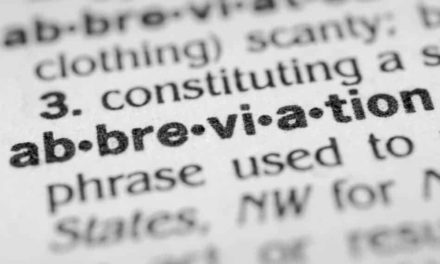Efficiently Checking Parenthetical References against the Final List
One of the least appealing aspects of proofreading a paper before submitting it to be considered for publication by an acquisitions editor is checking the documentation. Sources consulted while preparing the article should be cited accurately, thoroughly and usually in accordance with a particular style. Every source cited in the paper should also appear in the list, and, as a general rule, every reference that appears in the list should be cited at least once in the paper. When parenthetical author–date references are used in the main body of an article, it is especially important to check the in-text references against the final list to ensure that the information – author last names and publication dates – that appears in both places is identical.
In principle, this sounds simple, but it is striking how many documentation errors stem from mismatches between the information provided in the main text and that provided in the final list. A systematic approach along the lines of the one I have outlined below is usually the most reliable strategy. It can be done on screen using a digital file of the document or on a paper printout of the document. In the first case, a split-screen mode or the use of two computer screens will make the task easier because it is ideal if you can see both the main body of the paper and its reference list at the same time. A hard copy of the document will readily enable this.
Begin the process by scanning carefully through your article for parenthetical references, which in the case of author–date citations are actually surprisingly easy to spot. Ensure that each in-text reference you come across contains the required information in the appropriate order using the correct punctuation, and then check it against the full reference for the same source in the list. If you find discrepancies in the spelling of an author name or in the publication date, whichever instance is erroneous must be corrected, but do be careful not to assume that one version or the other is correct unless you are absolutely sure. Checking and correcting the information against the original source is always advisable for complete accuracy, and such a check will often reveal other errors in need of correction.
It can be useful to mark each complete reference in the list in a highly visible way whenever you discover, check and correct an in-text reference to that source. Adding an asterisk or other identifiable mark at the beginning of each complete reference in the list will achieve this, and using red or another bright colour to do so will make each mark stand out effectively. Once you have made your way through the entire paper, these marks will show you which sources in your list have been cited in the main paper. If any do not bear marks, do a second search through your document for them. If they are not cited in the paper, they should probably be removed from the list, but if they are, they too should be checked and, if necessary, corrected before they are similarly marked in the list.
This method of checking parenthetical references is especially helpful when checking complex referencing systems such as that used in the documentation style of the American Psychological Association (APA). When using APA style any sources with three to five authors are cited within a text by using all author names for the first citation, but only the first author’s name followed by ‘et al.’ for subsequent citations. This can prove rather tricky in practice, but by marking each reference in the list with a red asterisk (or other visible indicator) when you discover its first use in your text, you will be able to determine at a glance whether a source with three to five authors has already been cited or not and therefore whether an in-text citation to it should use all the names or only the first along with ‘et al.’ The accuracy this can bring to a potentially complicated referencing style is well worth the minimal effort required to remove the red marks from your digital file (if you use it instead of a printed version) once you have finished checking and perfecting your references.
You might be interested in Services offered by Proof-Reading-Service.com
Journal Editing
Journal article editing services
PhD Thesis Editing
PhD thesis editing services
Expert Editing
Expert editing for all papers
Medical Editing
Medical Editing Services
Research Editing
Research paper editing services
Book Editing
Professional book editing services

















